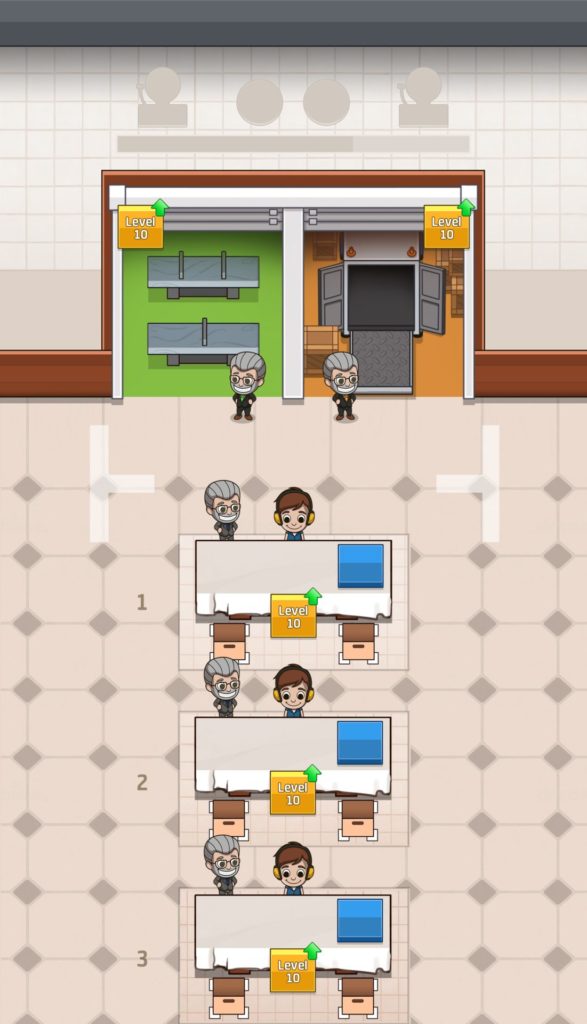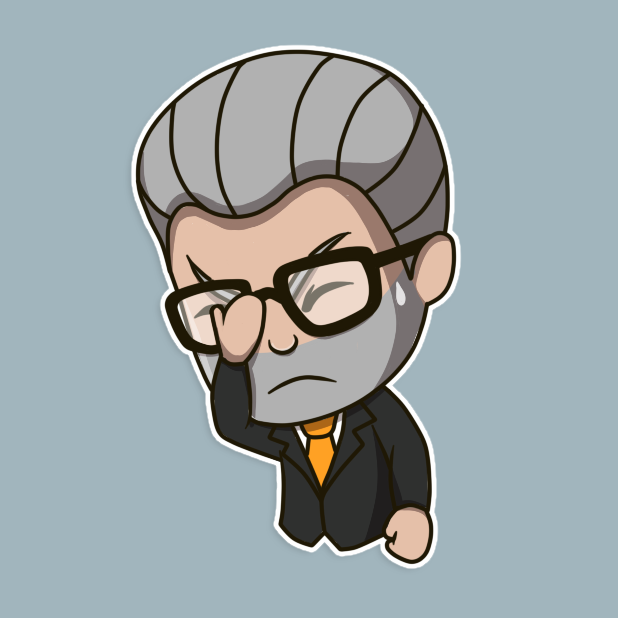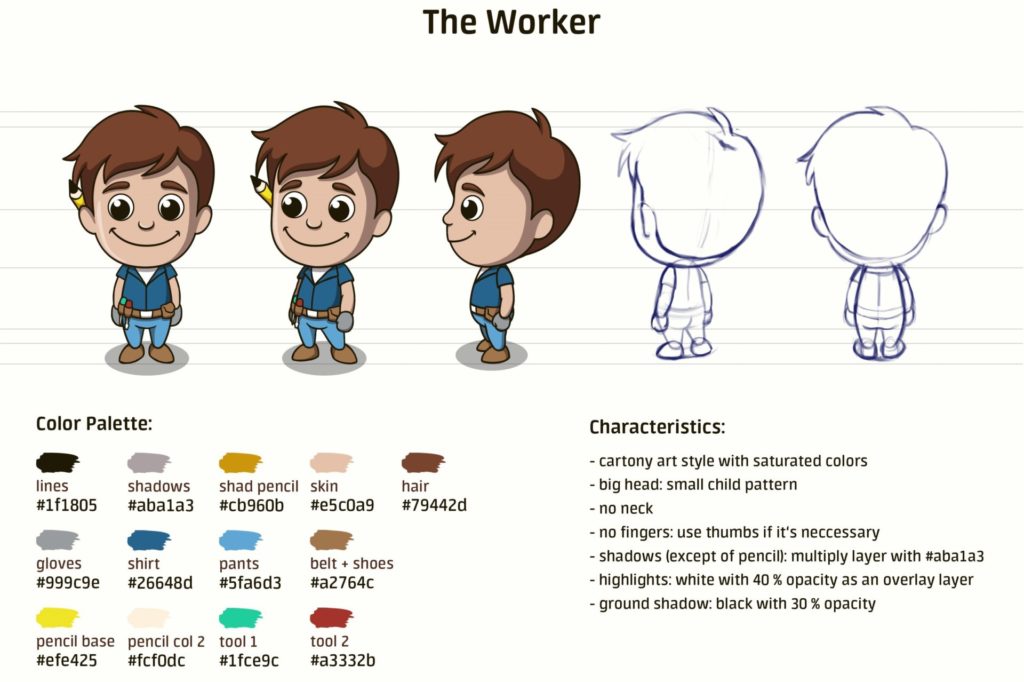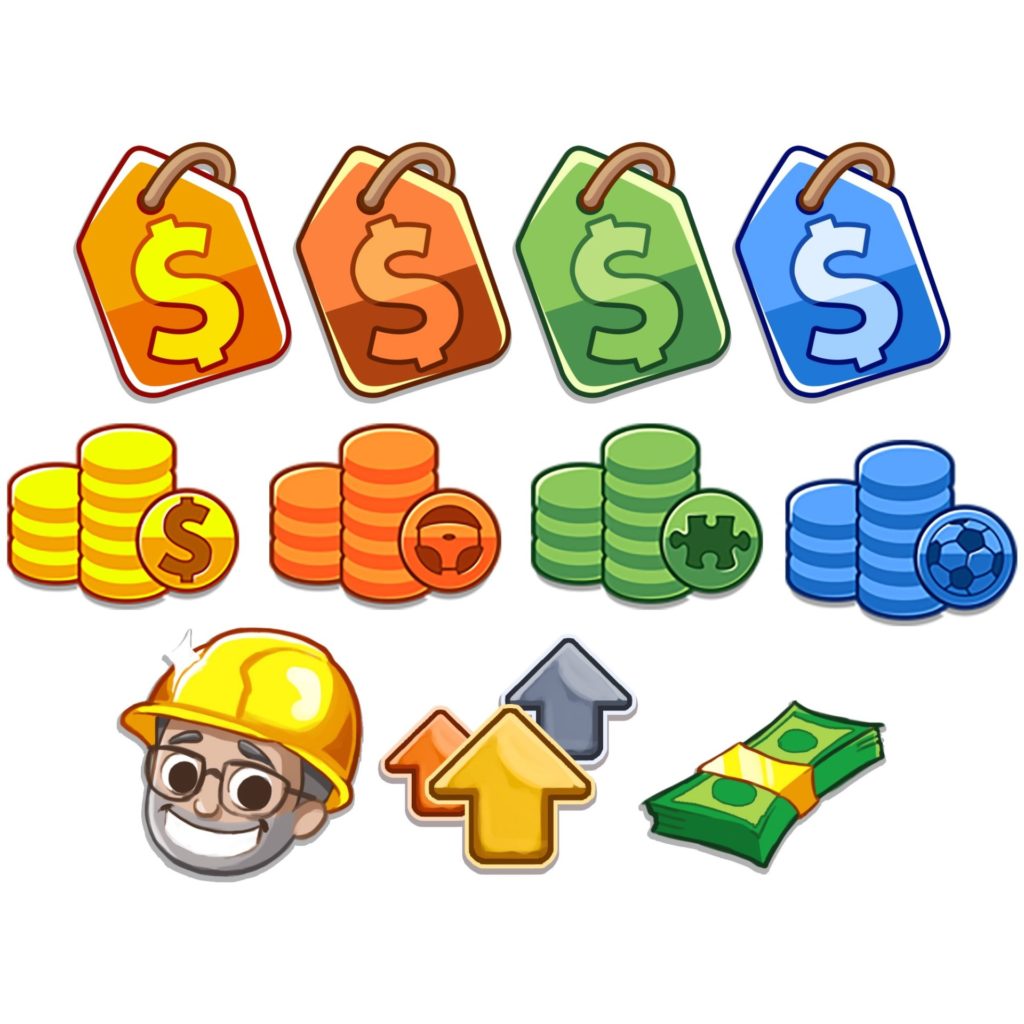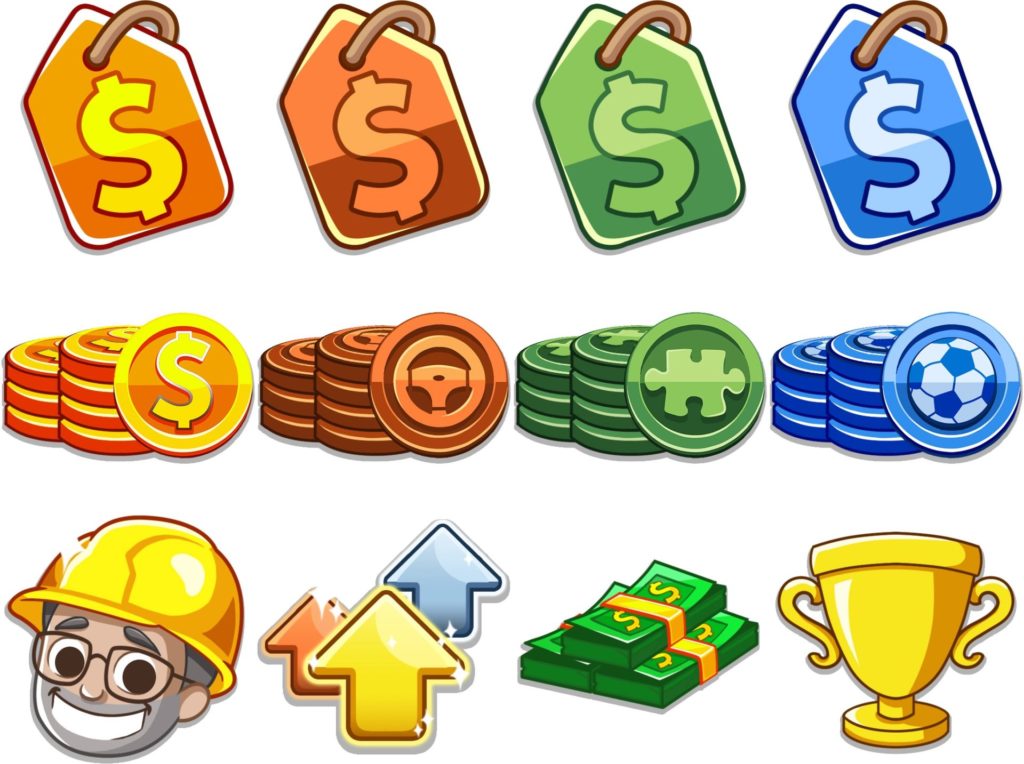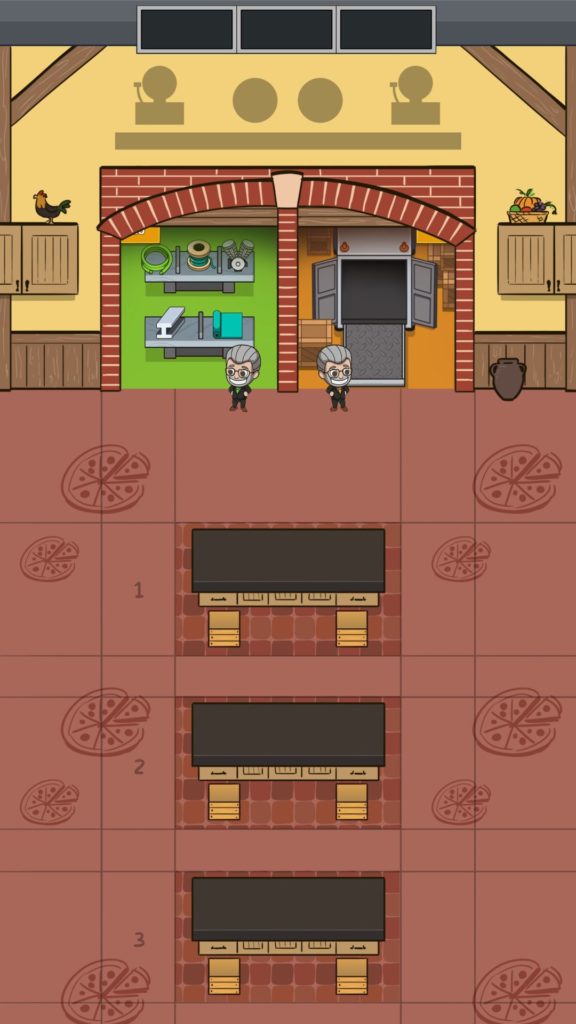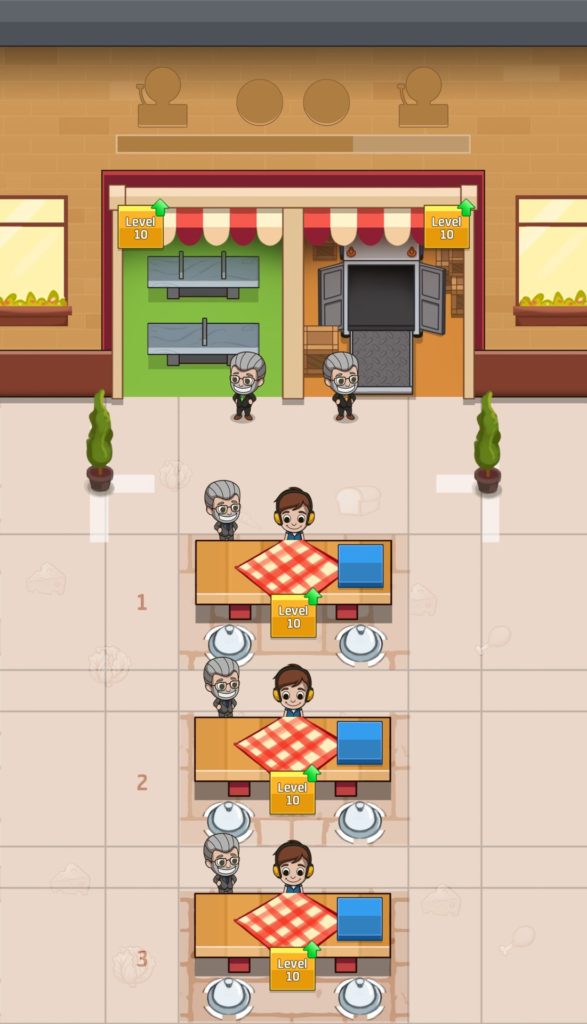Over the last few weeks, we have changed Idle Factory Tycoon’s looks quite a bit: Recent updates have introduced a re-designed world map, a whole new skill tree, the introduction of barrier quests and a re-design of unlockable factory areas. Part of what makes all these features fun for players is a compelling visual experience.
Meet Judy. Judy is one of two artists working on Idle Factory Tycoon. Unlike at other gaming companies where artists specialize heavily (to character artist, background artist or UI artist) Judy and her colleague are responsible for drawing every element that ends up in the game — from notification panels to maps to the cardboard boxes and dust particles that adorn unused parts of a factory.
Something special in every factory.
Now, with Idle Factory Tycoon we didn’t go for an overly sophisticated 3D game that would’ve taken months to create and even more months to polish — instead, we adopted a simple and effective art style with the potential to reach millions, if not billions of players.
We value a clear and easily understood style where every piece of art instantly advertises its purpose in the game.
Due to our “lean” approach to development, we rely on artists like Judy who are able to constantly produce new assets following a tight schedule. She has to work with extreme precision to achieve maximum expression and recognition value within the boundaries of a simplistic art style.
From the first sketch to the finalized asset.
How Judy starts working on an asset is different from feature to feature. Sometimes she gets a pretty clear mock-up or concept from the game designers that she has to transform into artwork, other times ideas for artwork need to be conceptualized from scratch. In that case, Judy brainstorms with her team, does a lot of research to explore multiple directions or simply gets in her zone and tries to come up with something herself. After the first concepts are made, Judy presents them to the product managers and iterates on her concepts based on the feedback she receives. Aside from that, she talks to the developers to find out in what size to best export the art assets she is creating. The developers then integrate it into the game and eventually, during a test session, she gets to see what her piece looks like.
Throughout the whole work process, Judy keeps the Idle Factory Tycoon art guidelines in mind. Each factory worker has to match the standard to achieve maximum recognition value: every color has to match the exact code, in highlighted and in shady spots, and every body part has to fit the prescribed proportions.
The Idle Factory Tycoon art guidelines for a worker.
What sounds like a pretty straightforward process, consists of a lot of feedback and communication between the artists and with other teams. The artists on Idle Factory Tycoon have a lot of freedom and work very autonomously, but constantly stay in touch with the rest of the team for art-specific feedback. The Product Managers keep an overview over the whole process and provide Judy with more general feedback, to ensure the assets are turning out as expected and that everything will be done on time.
Even though they are constantly communicating and collaborating, from time to time the artists are unable to come to an agreement over a certain topic. In that case, the Product Manager will usually go for the option that is best for this “lean” process, the fastest or the most efficient — after all, the artists work in weekly sprints that aim for almost weekly updates to the game, requiring them to produce new assets at a rapid pace. Sure, sophistication is welcome — as long as things are done on time.
The Concepts
The Final Version
In addition to this process-oriented approach, the characteristics of mobile devices further challenge Judy’s work as an artist. In a mobile world with many different devices in different formats and screen sizes, UI (user interface) is a crucial factor that determines the parameters in which Judy carries out her work: Every art asset looks different on a different device, which means that they sometimes need to be adjusted to fit a different format. On top of that, mobile devices work better with smaller assets — there is no place for high-volume 4K textures. Because Judy has to take into account all these factors, the assets that end up in the game often differ greatly from her initial concepts.
However, Judy’s biggest creative challenge has to do with the art style of the game itself. She describes Idle Factory Tycoon’s style as simple, cartoony and playful — in employing a lot of clichés and stereotypes it becomes very iconic. The artwork needs to be highly expressive and easy to decipher: players need to recognize and understand everything at first sight. Because Judy works in weekly sprints towards updates on an almost weekly basis, she has to optimize her workflow to ensure that her assets meet all the criteria and are finished on time.
From sketch to final polished version.
That simplicity is what makes creating the artwork so difficult. For Judy, less is more: She has to achieve maximum expressive value, all while keeping the art direct and easily recognizable. This challenge is especially difficult for artists who want to join the team. On their trial days, those who are used to polishing assets down to detail, struggle with finding the strongest and most expressive shapes and colors that fit the simple art style. Especially because everything is reduced to the bare minimum, the artists need to bring excellent knowledge of colors, composition and anatomy.
It takes exceptionally hard work to bring life into the factories in Idle Factory Tycoon. As an artist who wants to work to her full creative potential, Judy has to optimize her workflow to create outstanding assets in a short amount of time. But eventually, seeing how the game has progressed and visually changed since its launch in April is incredibly rewarding.
At Kolibri Games, artists bring joy to millions of players every day. Their art has a real impact — it captivates people, cheers them up and changes their lives for the better. The work on Idle Factory Tycoon allows Judy to contribute to a product with a massive audience that loves her art and is excitedly waiting for every new update. Being a part of Kolibri Games means working as part of a team that is passionate about improving its products and goes out of its way to keep its promise to its players. Judy works hard, but she does what she loves in a challenging environment that recognizes her talent and allows her to improve her skills.
